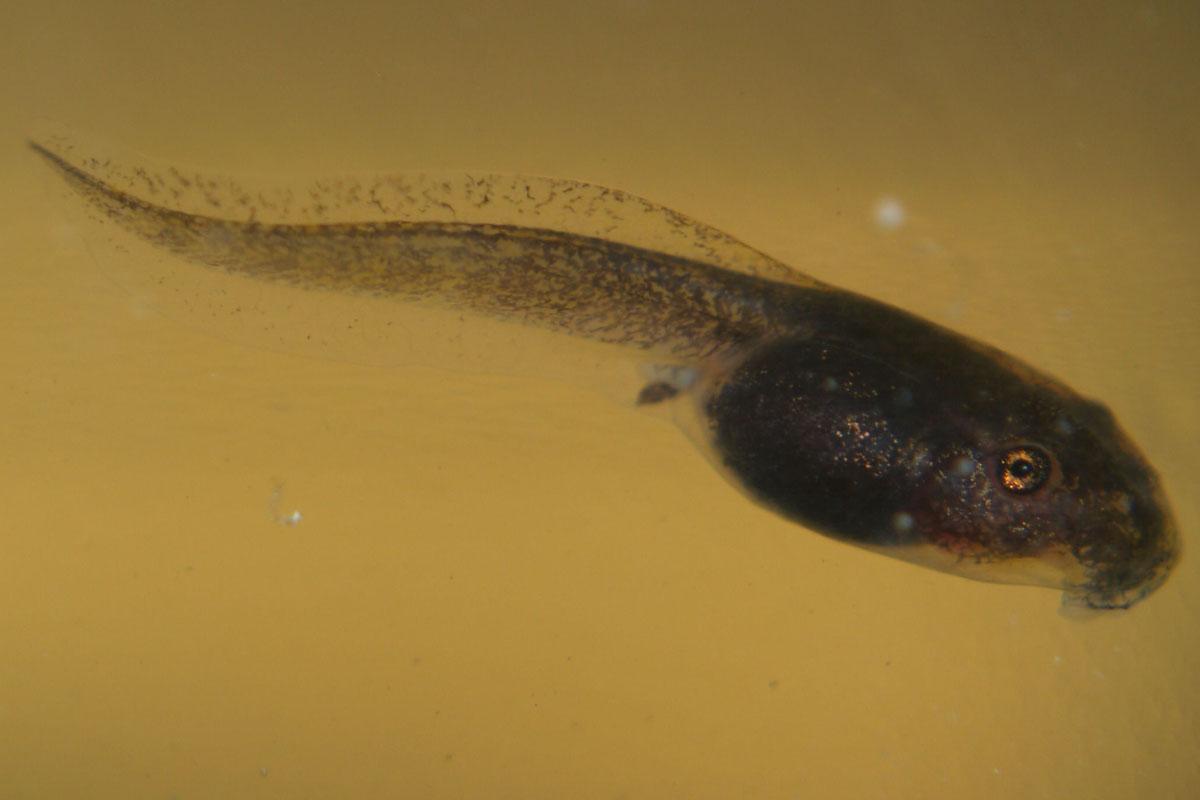D: There are lots of animal species that don’t care for their young, Yaël. What is it about our brain that makes us care about our kids?
Y: This is a hard problem, Don, but recently, an international team of researchers made progress by studying the brains of South American poison frogs.
D: Frogs? Why frogs?
Y: Frogs, and all animals with backbones, have a brain with the same basic plan as ours. Some frogs, including South American poison frogs, care for their offspring. These frogs don’t lay their eggs in ponds or streams, because in the Amazon rain forest, these are teeming with predators. Instead, they lay eggs in a moist place on land. The male carries the newly hatched tadpoles on his back to a small pool of water.
D: I see, so scientists want to know what’s happening in the frog’s brain while it’s carrying its tadpoles.
Y: Yes, and to find out, they captured frogs that were carrying tadpoles and frogs that weren’t. They studied their brains, and found an important difference between the two sets of brains. An area of the brainstem called the preoptic area was more active in frogs that were caring for tadpoles. This area has widespread connections to other areas of the brain, making it well suited to modulate a complicated social behavior like parental care. There is other evidence that this area is involved in parental care in mammals, birds, and fishes. Comparing species makes the evidence for the preoptic area stronger. This is just a first step toward understanding the role of the brain in parental care.









